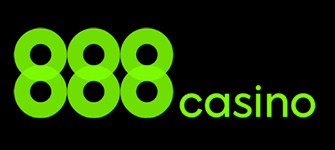Slots Introduction
Slot machines began their existence a while back. It was a different time so you can understand why the objective of these automatons wasn’t the same as it is now (or maybe the objective is exactly the same but aimed at a larger crowd. We will let you, the reader decide which statement is more accurate). The one-armed bandit (as it was known back then, and to some extent now) was born in a simpler time and wasn’t as important in its source of house revenue as it is now.
- ✓ Evolution of Slots
- ✓ The Liberty Bell Machine
- ✓ Online Slots
- ✓ Slots Today
- ✓ House Edge
- ✓ Reels and Symbols
- ✓ Payout Structure
- ✓ Stakes
- ✓ Random Number Generator
- ✓ The Dangers of Slots
Evolution of Slots
Slots have gone through an interesting evolution throughout the decades. Their origins could be traced back to the first gaming machines in the late 19th century, which were based on poker hands. In 1981, Sittman and Pitt of Brooklyn, New York, created a machine with five drums that held 50 card faces and could be spun when players placed a nickel and pulled a lever. The huge number of possible combinations, however, meant that no automatic payout system could be inserted into these machines.
From Poker Machines to the Liberty Bell Machine
Several years later, a San Francisco mechanic came up with a simpler automatic mechanism – this machine had 3 reels and 5 symbols could appear on them, namely horseshoes, diamonds, spades, hearts, and a Liberty Bell. This device became much more popular and its inventor, Charles Fey, became known as the Father of the Slot Machine. But this was just the beginning and multiple manufacturers started creating their own versions of Fey’s Liberty Bell. The name “one-arm bandit” came from the fact that the slots practically robbed players out of their money and simply from the look of the game – the machines had one lever or one arm.
Yet, the slot machine still used to be an elementary device to entertain the wives and girlfriends of the gentlemen who used to perform the “real” gambling in the house, which usually consisted of poker games. The machines offered some entertainment value with small stakes and even smaller prizes. There had to be something for the women to do while they were waiting for their significant others to have fun gambling.
Of course, in time things changed and the one-armed bandit became so much more than what it was during its inception. From fruit machines (there was a point in time when the prizes were actually bubblegums which gave them the nickname “fruit machines”) to a significant source of revenue, Slots underwent a full transformation. The target demographic has also changed during the inexorable development of the Slots. Nowadays it’s not unthinkable to see even young men playing these machines and pouring significant sums in the slots one coin at a time.
Later Development and Online Slots
The inherent mechanisms of the games, like many other things, also changed and this shouldn’t surprise anyone. The rampant march of technology cannot be stopped by anything, and nor should it. Back in the day, Slots were fairly simple automatons with three reels and a lever on the side (the lever, itself is the reason why they were called one-armed bandits – the lever was the metaphorical hand, and they were taking your money without giving you much in return). Today, the Slots machines are computer controlled and have many more reels, lines, screens and electronics behind them, and they are button-activated (although in some models still have a legacy the lever on the side but it’s just for show).
Known as video slots, they have no mechanical parts but are computer simulations of complex algorithm-based outcomes. They are run by special software known as Random Number Generator, which recreates the randomness of real-life mechanical spins of the reels. In land-based casinos, there are still some models with a lever on the side but it is just for show.
Probably the fastest change in this type of gambling entertainment came in the mid-1990s with the emergence of the Internet. Casino websites slowly grew in popularity and by the new millennium, there was an entire industry dedicated to the creation, distribution, and regulation of virtual slot games. Since then, the once-simple machines with bubblegum prizes have transformed into fantastic interactive games with plenty of bonus features, beautiful animations, 3D graphics, and mobile compatibility.
Slots Today: Are They Worth Playing?
Enough chit-chat about the nature of these fascinating inventions of the gambling industry, though. It’s time for me to give you a brief overview of how things actually play out, what the house edge is and why you should or shouldn’t play the Slots. I will also attempt to debunk some of the myths revolving around the machines, because there are many fairytales, legends, fables and the like that can actually be quite hurtful to your understanding of the game, as well as your wallet. And so, is it a good idea to play Slots?
We have what you might call “mixed feelings” as far as Slots go. We mean, yes, we might play a few games in-between our other gambling experiences, but that doesn’t mean we are particularly fond of them. You can lose a lot of money on Slots simply because the game is really fast-paced with low bets. You can waste your entire bankroll 25 cents at a time within an hour or two. Not to mention the fact that compared to other types of casino games, slots are based solely on chance and the odds are always stacked against the player.
Slots and the House Edge
The house edge is a mathematical average based on variables such as odds, possible combinations, and payouts. The house edge shows that each game was created with one purpose – that the casino will always have an advantage over its patrons. This is disturbing when you think about it. In addition, slots offer some of the worst bets in the entire casino.
At 5% to 10%, the house edge is huge and you are basically wasting your money in the hopes of winning. Today’s multi-line slots can offer you to bet on many lines, thus raising your chance of beating the game, but reducing the winnings themselves, which is what makes these machines even more dangerous. You can spend your entire bankroll in a blink of an eye and still be under the impression that you were winning until you realized that your pockets were empty.
When it comes to online slots, the house edge rarely reaches 10% and is usually around 94% to 97%, which is, of course, much more tolerable. Even slots with very high RTP percentages (the average return of the game or the opposite of the house edge, basically) are still negative-expectation games. This means that even if you do have a few lucky game sessions with exciting winning streaks, you will eventually lose against the casino. In the long term, slots are certainly not the best bet.
Reels And the Symbols Appearing on Them
Modern slots, which are computerized, virtual games run by complex software, resemble classic video games more than mechanical slot machines. Visually, they are designed to look like actual slot machines, of course. They usually have 3, 5 or sometimes 6 spinning reels with several rows of symbols on them. The most common reel structure is 5×3 where we have 5 reels and 3 rows but there are various alternative patterns such as 5×4, 6×4, etc. Some game developers have come up with more innovative designs where the reel grid has a diamond, pyramid, or some other shape.
Depending on the structure and the theme of the game, the symbols that appear on the reels could be of any nature – from fruits, card faces, and Bar symbols to images of various items and characters that fit the particular theme. The number of symbols, as well as the frequency of their appearance on the screen, varies significantly from one game to the next. This information remains concealed, however, which means it is impossible to calculate the odds of a certain winning combination.
Along with the regular symbols that form winning combos, most slots also feature symbols with special functions such as substituting for other symbols (wilds) or triggering a bonus game (bonus symbols). Another common special symbol is the scatter symbol, which usually activates some free spins rounds but most importantly, it does not need to land on a particular payline. It can bring a payout or execute some other task even if it appears scattered on the reels – hence the name scatter symbol.
Payout Structure
This brings us to the other fundamental component of the slot – the payline. In the past, 3-reel slot machines had a single horizontal line across the reels and if 3 identical symbols landed on this line, they would form a winning combination. Today, the paylines can be in any form or shape – horizontal, diagonal, V, or W shapes, for example, as long as the first symbol from the combination falls on the leftmost reel of the game. Whenever 3, 4, or 5 symbols of the same kind land on one of these predetermined lines, they bring a coin prize according to the paytable.
Typically, you would find slots with 9, 10, 15, or more paylines and while in some games, they are always activated, in others, players can choose the number of lines they want to play with. Of course, the more paylines, the more winning opportunities. However, to activate a line, players need to place a coin bet on it, so if you want more chances to win, you will have to pay the cost. If, for instance, we play with 10 paylines and wager 1 coin of $0.25 on each of them, we will need to bet $2.50 on each spin. When we hit a winning combination, the game will pay out a prize that is a multiple of our bet per line. If we use the same example and hit a 3-symbol combo that pays 5 coins, we will receive an actual payout of $1.25 (5x$0.25).
This is how standard slots pay and it applies to the vast majority of games you can find online or in land-based casinos. In recent years, however, some software developers have introduced more creative payout systems such as the so-called “all ways win” or “243 ways to win” structures. With these, there are no actual paylines and the symbols simply need to appear on adjacent reels starting from the leftmost one to bring a payout. In some games, combinations can appear in both directions – from left to right and from right to left.
Stakes
The next step in our understanding of the slot game is how bets are placed. We have covered this topic in short in the section above but there are a few small, yet fundamental details we need to explain. Unlike other casino games such as blackjack or roulette where you simply place a chip on the table to start the game, slot players need to consider several things – the number of paylines they play with, the number of coins they intend to wager, and the size or denomination of the coins.
All these will determine the size of the stake in each spin. Let’s use the same example once again – we have a 10-line slot but this time, we can choose the number and denomination of the coins. Many games allow betting up to 10 coins per line and the coin sizes vary significantly across different slots – $0.01, $0.02, $0.05, $0.10, $0.20, $0.25, $0.50, $1.00, $2.00, etc. If we stick to the minimum coin number and size but want to activate all 10 paylines, we would be betting $0.10 (10x$0.01). The absolute minimum stake in this game would be $0.01 where we play with 1 coin of $0.01 and 1 active line. The maximum bet, on the other hand, would be $200 per spin – 10 lines multiplied by 10 coins of $2.00 each.
RNG: The Mechanics Behind the Visuals
Another fundamental principle in slots is the way they actually work and the RNG software that governs them. The RNG, which is short for Random Number Generator, is a computer program, which constantly generates random numbers based on a predetermined value known as “seed”. It is built in the code of the game and players have no access to the numbers generated, nor they can see the seed number which governs the number generation processes.
It sounds complicated and it is – its effect in slots, however, can be explained in a very simple and straightforward way. Once players adjust their bet and push the Spin button, the RNG “spits” out a random number out of the thousands it constantly generates even if no one is playing. This number corresponds to a particular outcome – what symbols would appear, where, and in what sequence. In other words, when we push the Spin button, the RNG determines whether we win or lose – the following animation we see on the screen is simply a visual simulation of mechanical reels that are spinning.
There are two important consequences of this. First of all, the outcome in slots depends only on chance. It is random and it cannot be predicted or influenced in any way by players or casinos. Second, we can also conclude that unlike in card games, for instance, each round (or spin) is completely independent of the previous outcomes. And it does not influence any future spins. What this means is that using betting systems, strategies, and relying on ideas such as losing or winning streaks, hot or cold slots, is simply pointless.
The Dangers of Slots
As we can see, slots are not the best option for gamblers who want to make some profit while being in the casino. This is not the only problem most players have with slots, though. After all, gambling should be seen as a form of entertainment before anything else so losing some of your money should not be a serious issue.
Solo Type of Game
Many casino goers have always seen gambling as more of a social experience. For them, it has always been a way to make new friends, have some fun, and get some of that sweet casino money at the same time. When you play craps, baccarat or blackjack, for example, and you start losing a lot, there is almost always someone to make you think about what you are doing as you are going through your bankroll at unimaginable speeds.
It is not unusual to see the dealer telling bettors that it is probably time to stop for the night and go grab a drink. It may not be the dealer – it might be a friend, another unfortunate gambling enthusiast, or anyone, but in the gambling establishment, there will probably be someone to get you back to earth and make you think about what you’re doing before you have lost too much.
However, with slots, it is more “man versus machine” – it is you against it, you against the casino. There is no one to tell you to stop and you do not really want to stop either way, because “you’re winning” (as discussed earlier). This illusion of winning and the flashing colors, amusing sounds, and the false sense of accomplishment are what make slots so addictive. This can be a real problem for many people.
False Sense of Winning
“Ah, but you don’t know about that magic system I paid $50 for,” we can hear you exclaim, “and that’s why you’re telling me not to bet too much. If you knew the secret, you would be rich right now and not telling me not to bet on slots!” You continue. If you have ever encountered such offers for magical systems, we can understand why you would think that, dear readers.
However, there is no magic system to beat the game and there never will be. If there were such a system, casino owners and managers would have removed every slot machine from Las Vegas to Monte Carlo and beyond and the one-armed bandit would be a term used to describe only actual bandits who have only one arm. If you were losing thousands of dollars every day because people have figured out a way to lie to your machine into giving them money, would you just silently observe while your business is falling apart?
Do Not Rely on Fake Slots Strategies
The truth is that such “strategies” and illusions of winning are what keeps people playing. Without them, people would’ve realized the truth – that Slots offer terrible odds and that they would be just wasting their money if they thought they would win anything. Slots strategies often consist of finding a “loose” machine and adjusting your bet based on the previous spin. Both tactics could be helpful in a certain way but they simply cannot guarantee consistent, long-term winnings.
So when someone approaches you, or starts bragging and advertising their “winning strategy” online, please, advance to the topic with a high degree of caveat because you risk a lot and will probably not get anything in return. Slots make way more money than they lose. While there is a small chance that you win more than you lose, the odds are seriously against you.
All of this isn’t to say that playing Slots is the most horrible thing you can do in your life. No. But if you want to enjoy the experience in any way, shape or form, it’s a good idea to bet small amounts and always keep in mind that it’s quite possible that you will lose. If you take the illusion of winning out of the equation (because trust me, in most cases it’s really just that – an illusion), then the experience can be actually quite enjoyable, even though you’re losing.


 PlayOJO Casino
PlayOJO Casino 888casino
888casino All British Casino
All British Casino Casino Action
Casino Action UK Casino Club
UK Casino Club